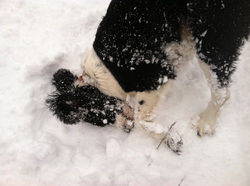Did ya' know.....?
1. Wombat poop is cube shaped. Their feces act as territorial markers and the distinct shape helps it stay put on tricky locations.
2. Giraffes have the same number of cervical vertebrae (bones in that very very long neck) as humans! They have 7 and so do we.
3. Manatees and sloths are the only mammals who have a different number of cervical vertebrae. Manatees and two toed sloths have 6, three toed sloths have 9.
4. A single litter of kittens can have multiple fathers
5. Cats purr when they're happy, but also when they're sick or scared.
6. Cats are missing a liver enzyme that dogs and humans have. Because of this, they are very sensitive to some common drugs and can be killed by just a single dose. Always ask a Vet before giving your cat medication!
7. Sweden has a rabbit show-jumping competition called Kaninhoppning.
8. Dog's noseprints are as unique as human fingerprints - no two dogs are the same!
9. A pack of kittens is called a kindle. A group of adult cats is called a chowder.
10. A female cat won't ovulate unless mated. They are 'induced ovulators.' This dramatically increases the liklihood that a female cat gets pregnant with just one mating and is part of the reason there is such a cat overpopulation problem.

 RSS Feed
RSS Feed
